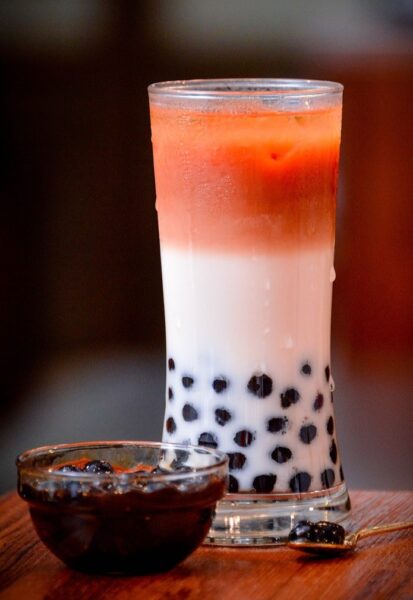
Tea was growing on the island long before large-scale Han Chinese settlement began in the 17th century. Early pioneers discovered and harvested leaves from indigenous wild-tea trees. However, these were all but forgotten about until the 21st century, when specialist vendors started to market what they called shan cha (‘mountain tea’) or yesheng cha (‘wild tea’).
More than 99 percent of the tea grown in Taiwan are varieties introduced in the 19th century, and by the 1870s tea had become a key export. Entrepreneurs, among them some Westerners, set up plantations in places close to Taipei, including Muzha, Pinglin, and Sanxia. Pinglin remains one of the island’s top tea-growing areas, with dozens of farms devoted to Wenshan Pouchong tea. By the time the Japanese took control of Taiwan in 1895, Formosan oolongs were being enjoyed as far away as London and New York. When production peaked a few years before World War II, Taiwan was the world’s number-six source of tea.
A small crop but in huge demand
Local tea farms now produce about 14,000 metric tons of leaf per year; by comparison, China grows well over three million metric tons annually. The annual Oriental Beauty tea crop seldom exceeds 30 metric tons, most of which comes from the Hsinchu County townships of Emei and Beipu. Despite high prices, around a third of Taiwan’s output is exported. Oolongs grown at high altitude enjoy a stellar global reputation; after harvesting, the leaves are withered under the sun, then left to partly oxidise. (Green teas are minimally oxidised; black teas are fully oxidised.)
The Tea Enthusiast’s Handbook: A Guide to the World’s Best Teas (2012) explains that ‘Taiwan is blessed with a nearly perfect geographic location, abundant natural resources, and an ideal subtropical climate. Tea farmers and producers use that to their advantage — Taiwan’s oolongs are some of the world’s most aromatic, expressive, expensive, and rare teas. Taiwan oolongs include a larger span of leaf styles and oxidation levels than their Chinese oolong cousins, giving tea enthusiasts more delicious choices to explore’.
Taiwan’s oolongs are harvested between three and six times per year, depending on the farming method and the plantation’s elevation. Farms more than 1,500 m (4,921 ft) above sea level, such as those you’ll see when approaching Alishan, typically harvest just three times a year. Some lower-altitude farmers do the same, to maximise quality over quantity.
Where to try, where to buy
Before spending serious money on what appears to be quality local tea, it pays to do your research and exercise some caution. Because there’s a considerable price difference between Taiwan-grown leaf and tea imported from Vietnam or China, some unscrupulous business people try to pass off the former as authentic Taiwanese oolong. This is just one of many situations where having a Life of Taiwan’s experienced driver-guide to assist with communication can make a world of difference.
Even if tea isn’t a focus of your Taiwan trip, you should take the opportunity to sample some of the tea-based drinks which local people guzzle in great quantities. The best of these are made fresh at roadside tea kiosks across the island. Each beverage is mixed to order in a cocktail shaker, the customer specifying how much or how little sugar or ice he wants. What’s become known throughout the English-speaking world as ‘bubble tea’ is known to Taiwanese as zhenzhu naicha (‘pearl milk tea’) or boba naicha — boba is actually local slang for large female breasts! Thanks to the chewy black ‘pearls’, which are made of tapioca paste and sucked up through a thick straw, this drink often serves as an after-lunch dessert.
In addition to milk, black, and oolong teas, such kiosks very often sell caffeine-free winter-melon tea. Notwithstanding its name, this drink is especially popular in the summertime, as winter-melon (also known as wax gourd) is regarded as a ‘cooling’ food in traditional Chinese medicinal theory. Teas flavoured with coconut or jelly made from Chinese mesona (a distant relative of mint, sometimes translated as ‘grass jelly’) aren’t hard to find. During the winter, some people like hot longan and/or ginger tea.
Taiwan has at least two museums devoted to tea and tea-drinking culture. One is the Pinglin Tea Museum of New Taipei City, a 35-minute drive from central Taipei. The other is Ten Ren Tea Culture Museum in the town of Zhunan, just south of Hsinchu. To begin planning your Taiwan tea experience, reach out today and let our travel experts craft for you an amazing itinerary.

